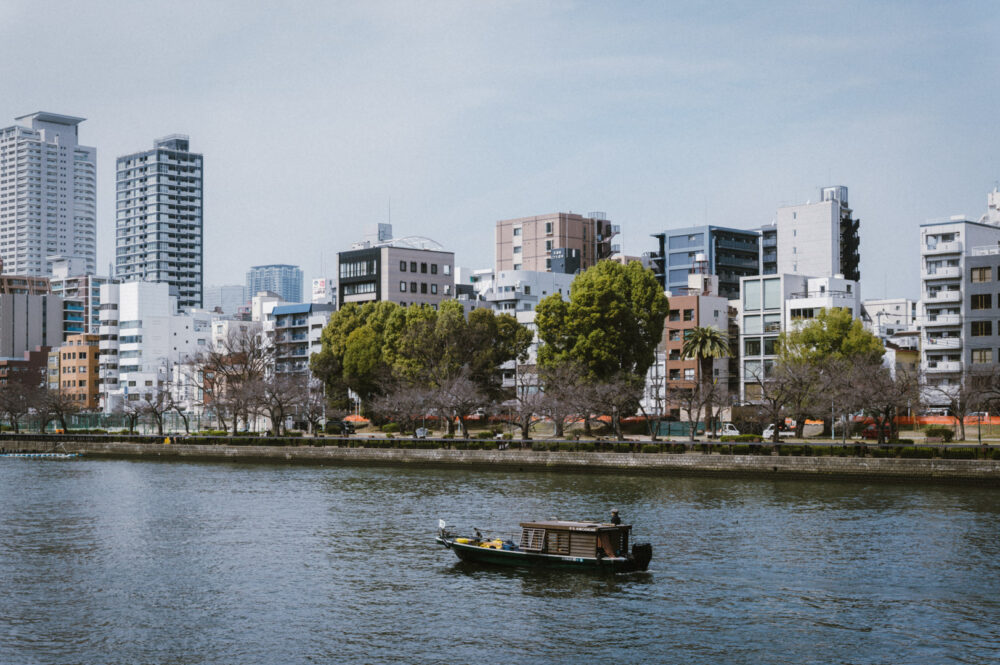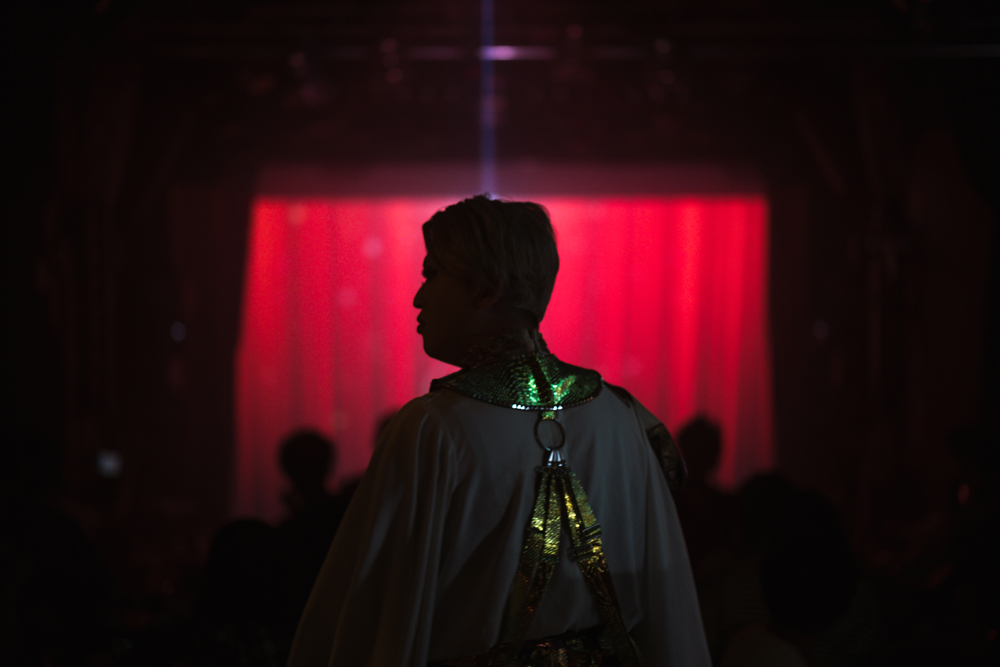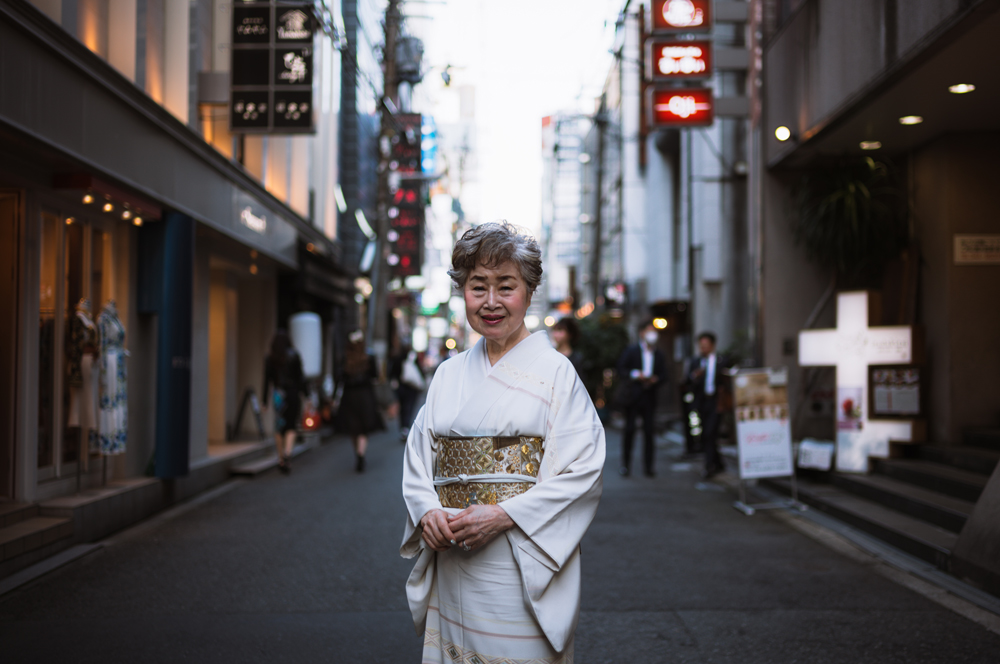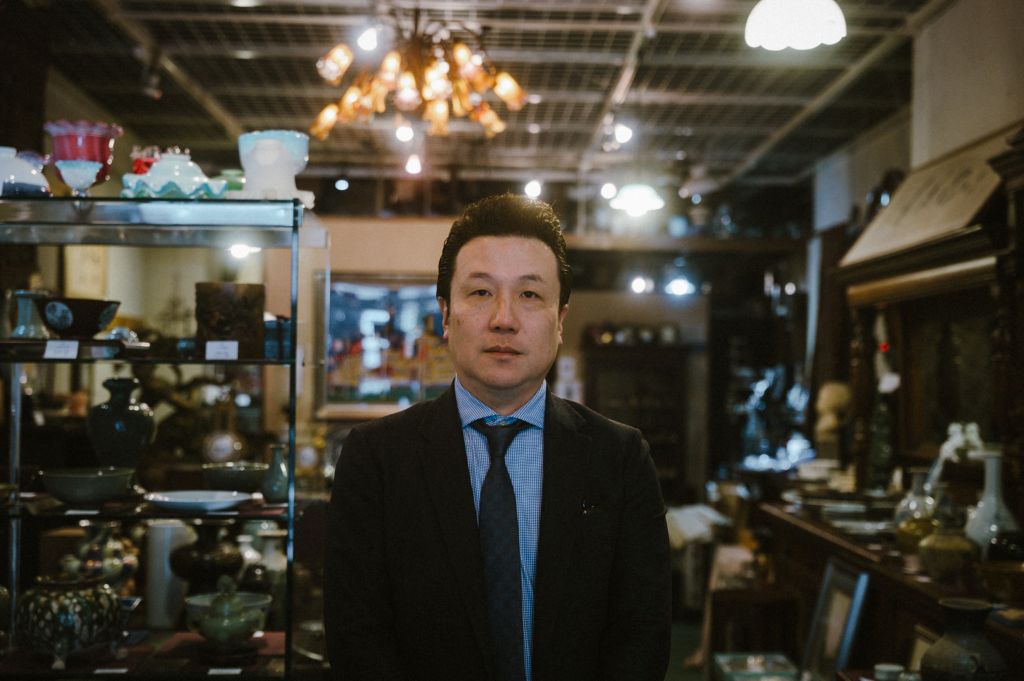
Oimatsu-dori, which runs east-west through Osaka’s Nishitenma district, is lined with antique dealers and art galleries and is the best street in the Kansai region when it comes to art. It is famed for the Oimatsu Antique Festival, held in the spring and autumn. The street is thronged with people of all ages, genders and nationalities who come in search of antique artworks and curios. With the help of Gallery Tezukayama’s Minoru Horita, who is also a member of the festival’s executive committee, we will recount Oimatsu-dori’s story.
Oimatsu-dori, home to many antique shops, is one of the best places in Osaka for the arts
Oimatsu-dori is in a corner of Osaka’s Nishitenma district where you can forget the hustle and bustle of the city. Around 90 antique shops and art galleries are packed into the roughly one kilometer-long street. The items they deal in run the gamut from antique oriental artworks, tea ceremony utensils and western antiques, to ancient and modern paintings and contemporary art. Ambling along this street feels like a journey through the history of art.
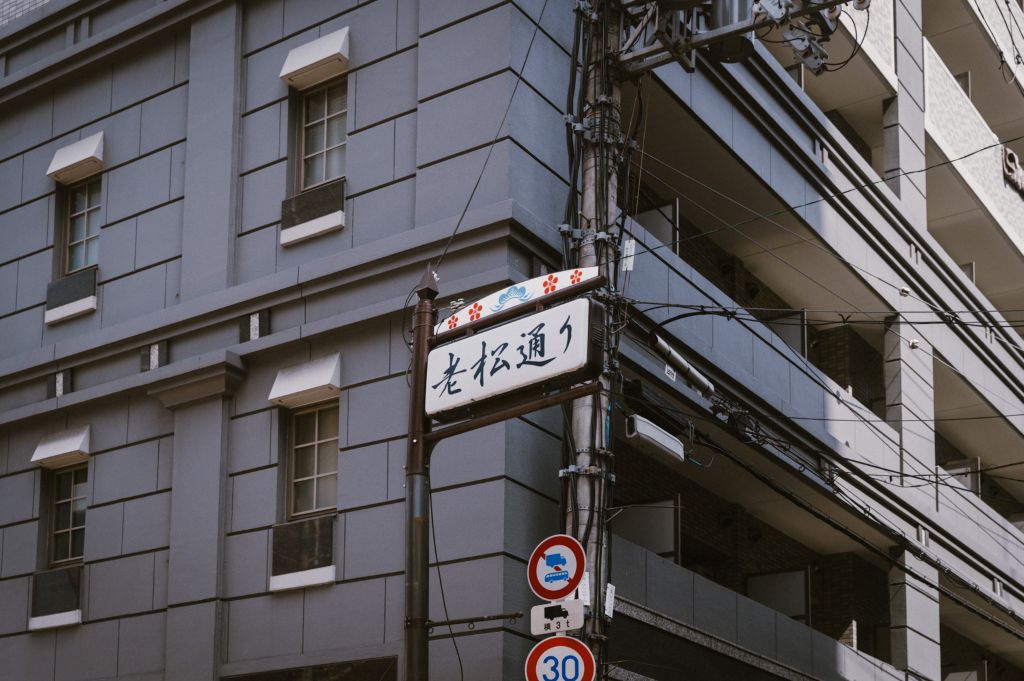
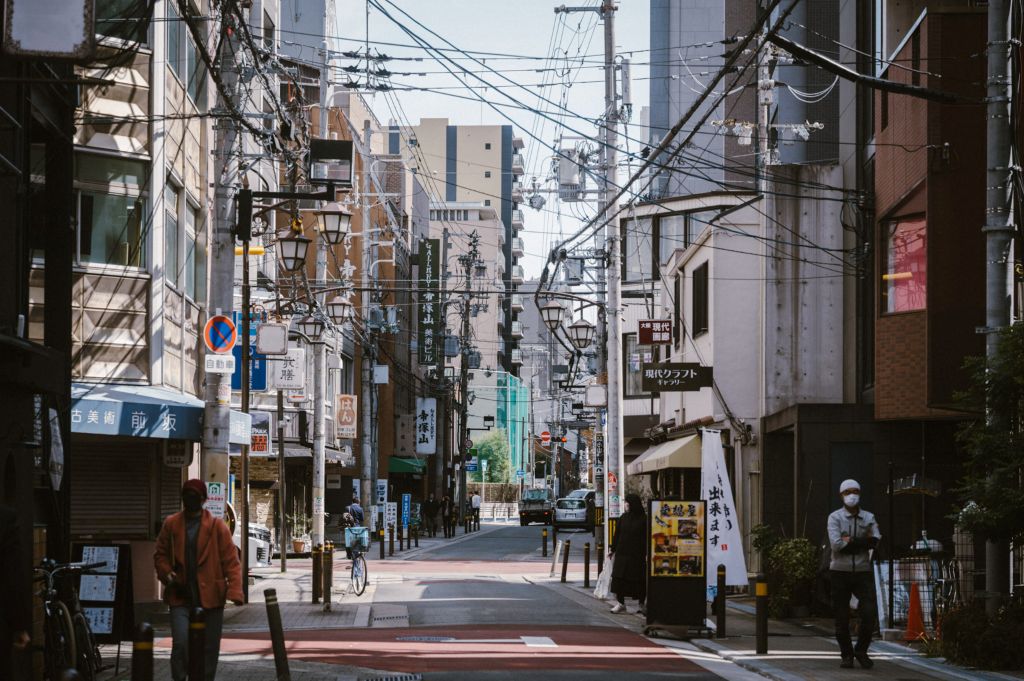
The street’s name comes from Oimatsu-jinja, a shrine planted with venerable pine trees, that used to be located here. (Oimatsu is “ancient pine” in Japanese.) Although the shrine and most local place names no longer exist as a result of urban rezoning, the district is still sometimes affectionately called Oimatsu-cho even today. Antique dealers and art galleries started to gather here when famous Tokyo antique shops relocated to the area in the Showa era (1926-1989).
A stroll along this elegant street brings us to our destination, Gallery Tezukayama. This gallery is in fact a driving force in the Oimatsu-dori art scene.
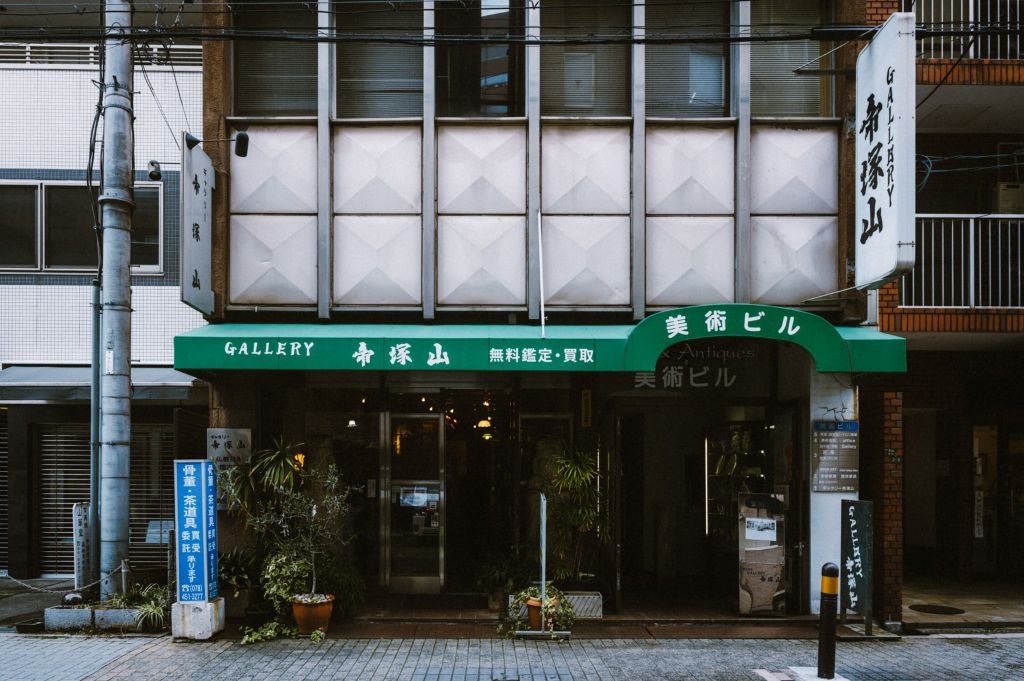
The second-generation proprietor has honed his sense of beauty over the course of more than 30 years
Gallery Tezukayama opened in 1973. As soon as you open its door, you are drawn in and entranced by an atmosphere just like an art museum. It has items that come from all over the world, ranging from antique artworks from China and the Korean Joseon dynasty and antique occidental porcelain to Buddhist art from India.
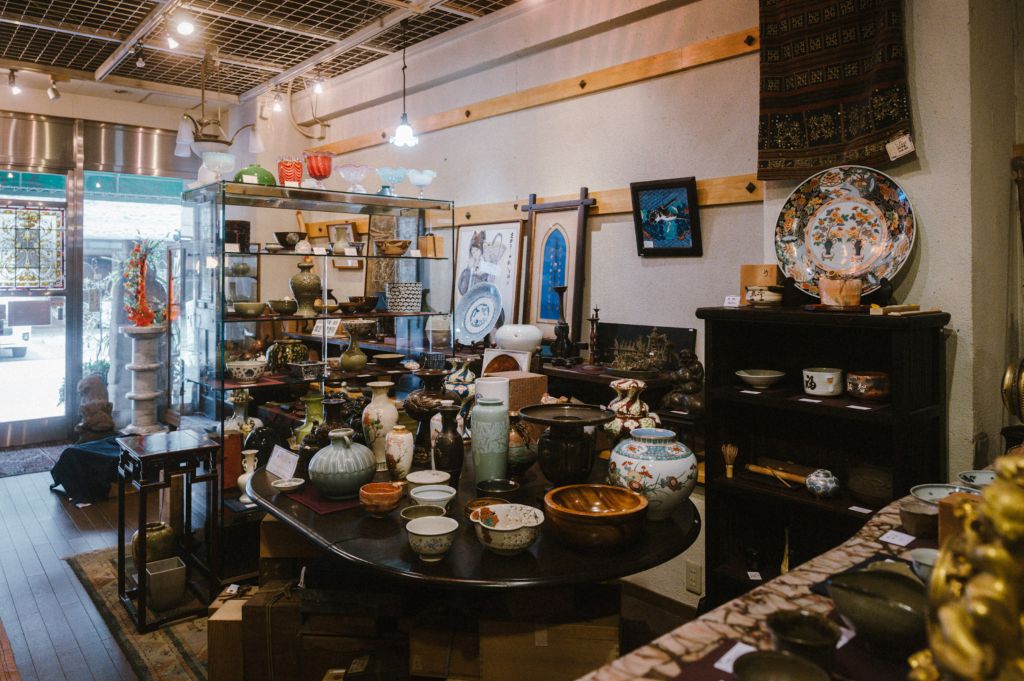
Minoru Horita entered the world of antiques when he was only 18, and has continued to appraise and deal in them for more than 30 years. He became the second-generation proprietor of the gallery in 2018.
“I developed and improved my judgment through my buying. It’s a deadly serious business as misjudging authenticity* throws our operations out of kilter. Many of our customers have a better eye than me. You develop nerves of steel when dealing with such connoisseurs,” says Horita-san.
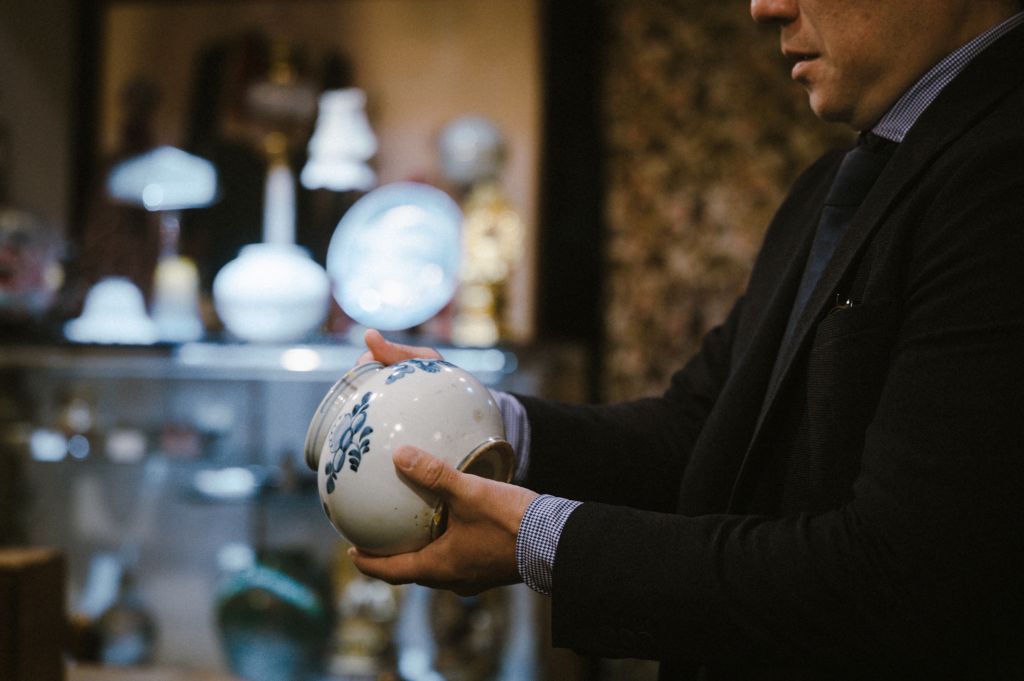
He sources the finest artworks from around the globe, which is why he has so many customers from overseas.
“Recently we are seeing more customers from Singapore, Malaysia, and Vietnam. It’s fascinating how we gain insights into global economic trends via our interactions with customers.”
When the economy picks up, more people invest in antiques or enjoy them as a hobby. The gallery truly is a microcosm of the world economy.
The significance of the Oimatsu Antique Festival making the world of antiques more accessible
Horita-san is also on the Oimatsu Antique Festival executive committee. This event is a festival of antiques and antique artworks that is held biannually, in the spring and autumn.
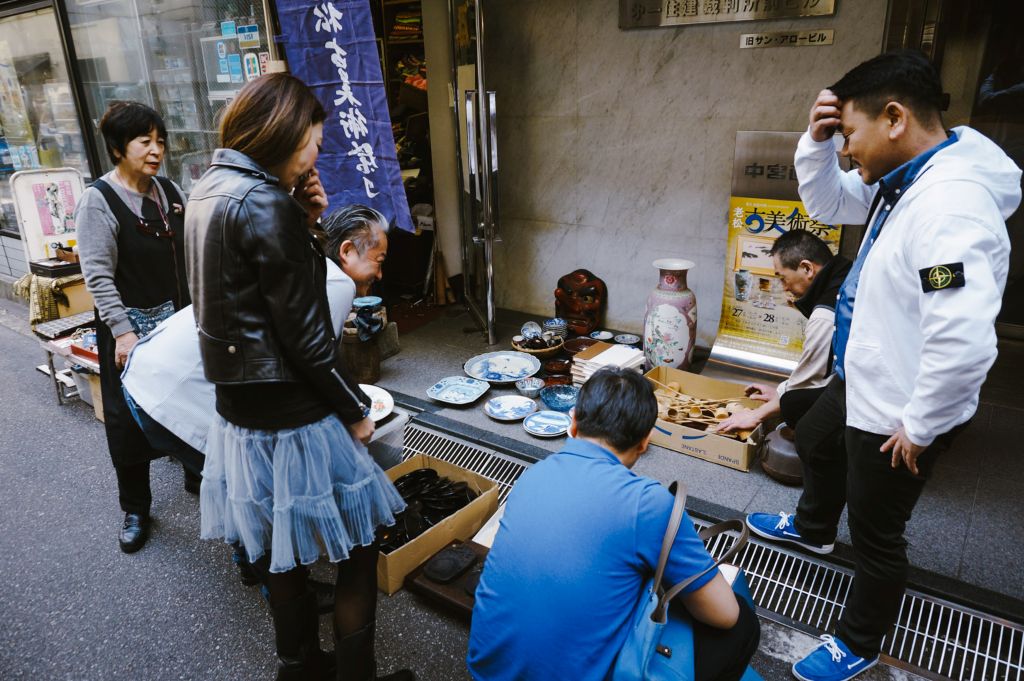
It began in 1995 with the aim of supporting reconstruction after the Great Hanshin-Awaji Earthquake, and was recently held for the 55th time. Horita-san has been involved in its running from the very start.
“Personal computers were still not widely used at that time, so it was quite tough to begin with. I used a word processing machine to make pamphlets, took photos of other shops’ antiques as well, and printed out color copies at convenience stores.”
He had a heartfelt aspiration that inspired him to persevere and make the festival a success despite all the difficulties.
“There was a strong image of antiques as a hobby for middle-aged and elderly people, and young people tended to shy away from it. That’s why I wanted to make the world of antiques more accessible. Thanks to everyone’s efforts, it’s become an event that attracts a diversity of age groups, with visitors ranging from their 20s to their 70s.”
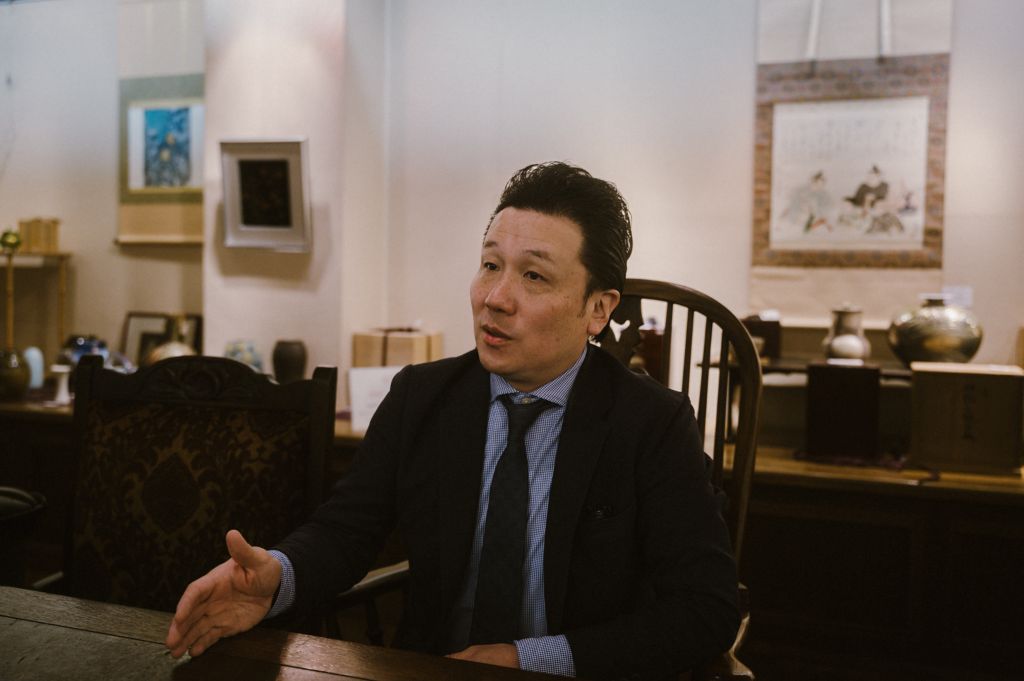
Horita-san offered a tip on how to enjoy antiques.
“In the case of ceramics from the Edo period (1603-1868), for example, I’d suggest thinking about the eating habits of the past. Doing so adds to the enjoyment as it stimulates your imagination and expands your cultural knowledge.”
If you find antiques intimidating because of their difficult image, why not pay a visit to Oimatsu-dori? Finding out about things of the past might just open up new vistas.
Information as of October 2025.

INFORMATION
Gallery Tezukayama
Floor 1, Bijutsu Bldg., 4-2-4 Nishitennma, Kita-Ku, Osaka
10:00 am to 5:00 pm
Closed on Saturdays, Sundays and public holidays

